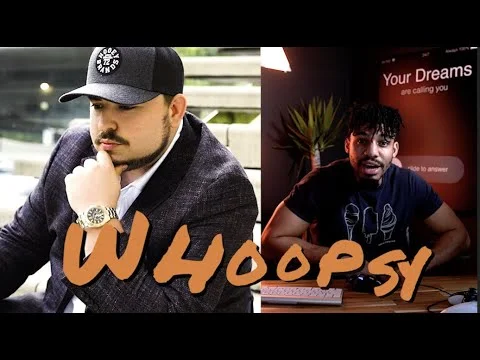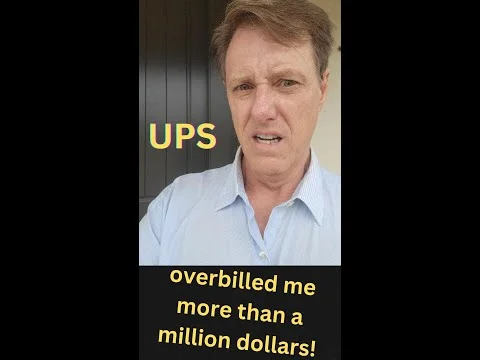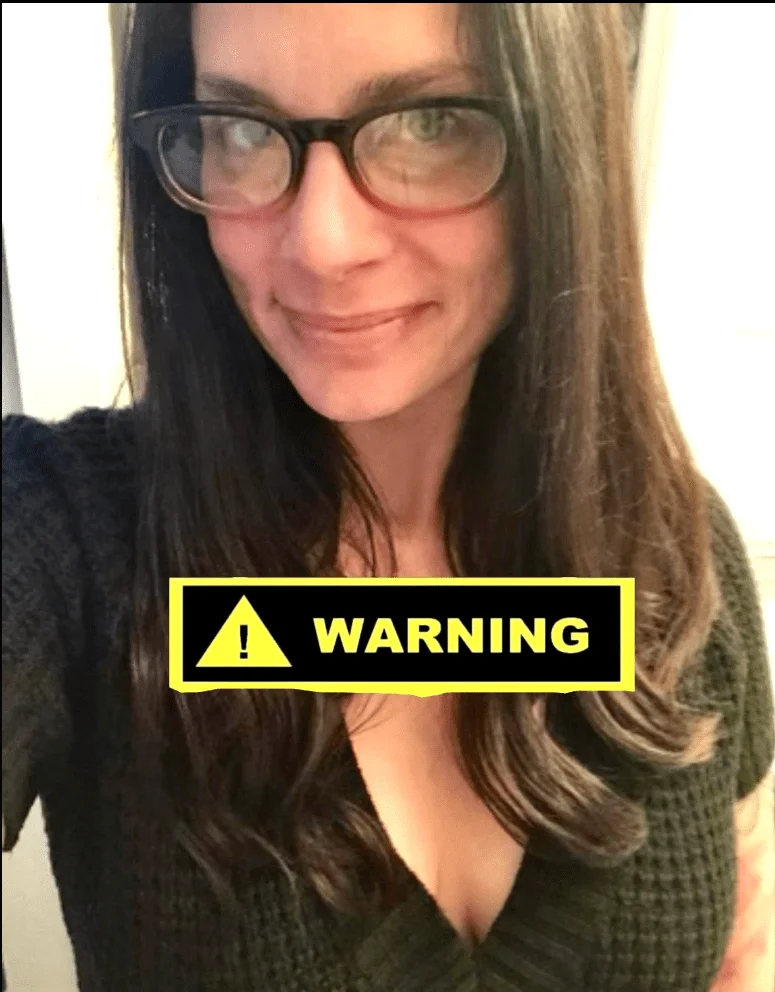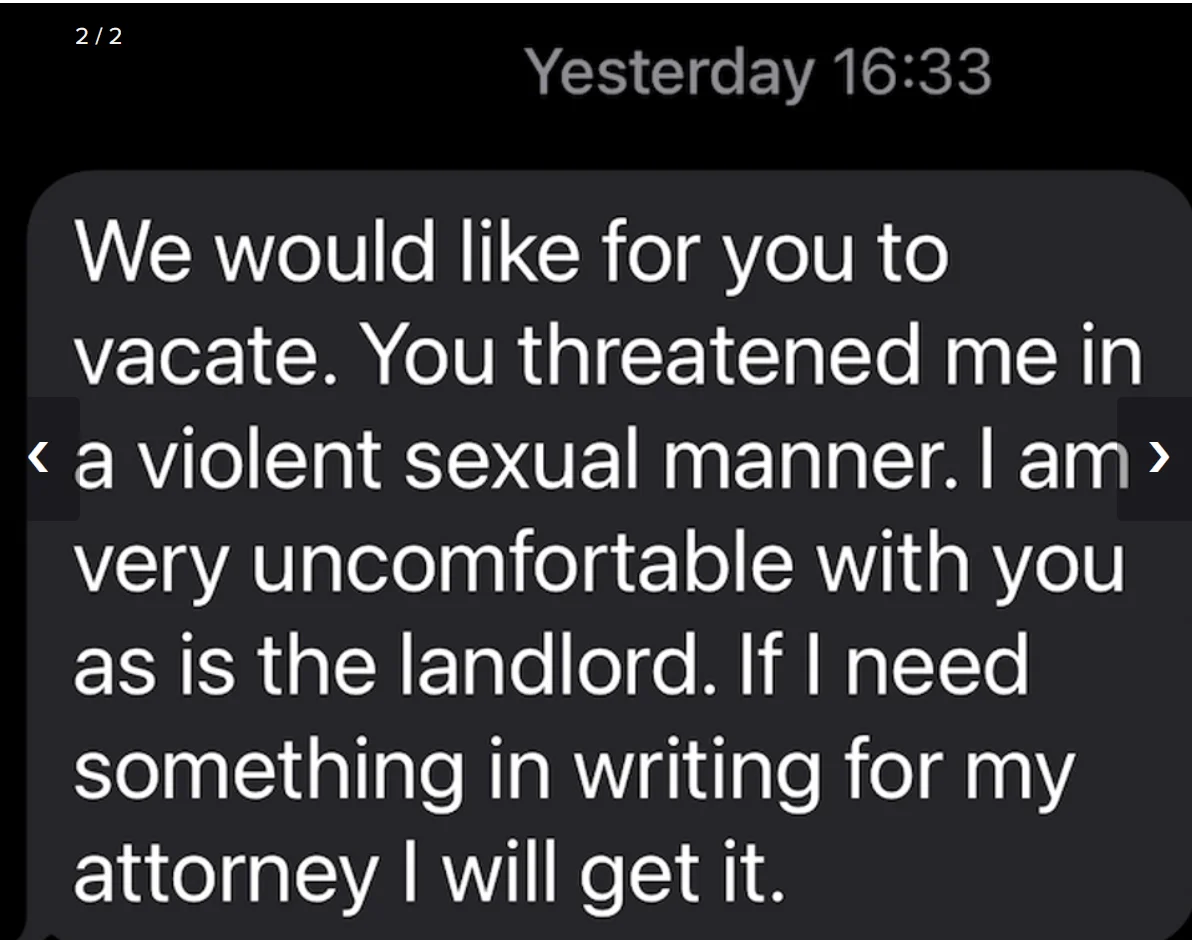- Report: #352801
Complaint Review: Bagdasarian Productions - Santa Barbara, California California
Bagdasarian False Claims Of Trademark Of The Alphabet Despite having their trademark rejected Bagdasarian still wants to stop people from using the letter "A" Santa Barbara, California
*Consumer Suggestion: RICO Claim
*Consumer Comment: Unfortunately, you are not getting the whole story.
*Consumer Suggestion: Court Of Appeals Determines Legality of TradeMark not Patent Office
*Consumer Comment: Unfortunately, the 'letter' itself is not the real issue
*Author of original report: BAGDASARIAN Intent was to Defraud?
This are the same crazy people that sue Universal for NOT Using their trademarked characters:
"The creators of Alvin and the Chipmunks sued Universal Studios for $100 million, asserting that the studio failed to create movies or television shows featuring the characters and, as a result, destroyed ''an American icon.''
Bagdasarian Productions, led by the son of the Chipmunks creator, Ross Bagdasarian Sr., said in the Superior Court breach-of-contract suit filed Monday that Universal had failed to live up to an exclusive licensing agreement.
The suit said Universal had failed to fulfill its promise to put the Chipmunks in motion pictures, videos and theme parks and on television, which would have led to merchandising opportunities for the characters.
Universal said it would have no comment on pending litigation."
Andre
San Fernando Valley, California
U.S.A.
5 Updates & Rebuttals
Angel
San Freedom Valley,California,
U.S.A.
BAGDASARIAN Intent was to Defraud?
#2Author of original report
Tue, July 22, 2008
David, the law Student is right, he is focusing his answer on the issue described in the report which is the validity or lack of validity of the trademark. I like to add an even more disturbing point: Assuming that Bagdasarian Productions is a wealthy enterprise represented by the best IP attorneys in the USA then what was their real intention when they decided to trademark every use of the letter "A" ? I can't imagine there intentions were honorable at all otherwise the claim would have been much more specific from the start, for instance, a logotype instead of a letter. The thing is that the Chipmunks are represented by teh drawing of Alvin, not the letter "A". The Chipmunks don't have a logo, they never did and claiming that a letter is their trademark is ridiculous at best and fraudulent at worse. Also, I can't imagine the fine officers at the US Trademark Office looking at this letter of the alphabet and thinking "hey, this is original, look, it's the letter "A" this is something we MUST approve immediately" This whole story of how this trademark came into existence stinks sky high and an inquiry should be of interest to journalists and attorneys alike. This is unbelievable that this application has been at some point approved and allowed to go LIVE at all. The person responsible for signing on the approval should be investigated for possible bribery or fired for stupidity or negligence. I sure want to know who approved it, because even tho I support copyright laws, fraudulent claims of Intellectual Property like Bagdasarian's are a Cancer that afflicts the soul of copyright law, these people make a mockery of the American way of life, they spit on our freedom and trample the right to free commerce. Someone should stop them before they trademark the rest of the English alphabet.
John
Califon,New Jersey,
U.S.A.
Unfortunately, the 'letter' itself is not the real issue
#3Consumer Comment
Sun, July 20, 2008
as the OP would lead you to believe. The issue is how the letter is used in a specific logo - not the use of the letter itself though the OP refuses to state this. One can presume that the OP is trying to shill something with a logo letter very similar if not exact to that of Alvin of the chipmunks to benefit from their creation and not to long ago released movie and DVDs. That's the only reason the chipmunks would be brought up specifically at all. As you have said, the Angels have been around since 1903 and they are not being hassled at all as their logo "A" is substantially different from the Alvin 'A'. The Colorado Avalanche use an 'A' in their logo also but are not being hassled. There is a lot more to this that is not being stated for fear of incrimination.
David
New York,New York,
U.S.A.
Court Of Appeals Determines Legality of TradeMark not Patent Office
#4Consumer Suggestion
Sun, July 20, 2008
I just saw the other post John. It looks like he has omitted some important facts here. Thank you. But I still support his position on other grounds and I will explain. There is a tradmark for the letter "A", which is registered with the Patent and Trademark office under the following serial number to the owners of Alvin and the Chipmunks, Ross Bagdasarian, Jr. and Janice Karman: "A" Mark Drawing Code (4) STANDARD CHARACTER MARK Serial Number 77415283 Filing Date March 6, 2008 CATEGORY: "IC 025. US 022 039. G & S: CLOTHING FOR MEN, WOMEN AND CHILDREN - NAMELY, SHIRTS, T-SHIRTS, SWEATSHIRTS, JOGGING SUITS, TROUSERS, PANTS, SHORTS, TANK TOPS, RAINWEAR, CLOTH BABY BIBS, SKIRTS, BLOUSES, DRESSES, SUSPENDERS, SWEATERS, JACKETS, COATS, RAINCOATS, SNOW SUITS, TIES, ROBES, HATS, CAPS, SUNVISORS, BELTS, SCARVES, SLEEPWEAR, PAJAMAS, LINGERIE, UNDERWEAR, BOOTS, SHOES, SNEAKERS, SANDALS, BOOTIES, SLIPPER SOCKS, SWIMWEAR AND MASQUERADE AND HALLOWEEN COSTUMES AND MASKS SOLD IN CONNECTION THEREWITH. FIRST USE: 19621231. FIRST USE IN COMMERCE: 19621231" In my own opinion, the A mark is weak and it has already been in use by others and this mark that was registered in 2008 could possibly be canceled pursuant to 15 U.S.C.A. 1064 Cancellation of registration.. Or an infringement claim can be avoided by simply differentiating the use of the mark so it doesn't confuse the public. The trademark of the letter "A" affects the above categories, which is a similar mark that the baseball team the Los Angeles Angels use on their website, T-Shirts and caps. http://losangeles.angels.mlb.com/index.jsp?c_id=ana Alvin and the Chipmunks was a popular TV series in 1983. However, the formation of the baseball team the Angels dates back to 1903, which is clearly before Alvin and the Chipmunks. The Angels used and continue to use the "A" mark on their clothing to identify themselves to everyone. One could argue that the "A" mark for Alvin and the Chipmunks differentiates itself from the "A" mark used by the baseball team the Los Angeles Angels; but this argument would also mean that anyone else can defend themselves from a claim of infringement by also differentiating their use of the "A" mark from the "A" mark used by Alvin and the Chipmunks and claim that the public would not be confused with the two A marks. Therefore, the key that would allow you to also use the A mark would be to differentiate it enough so it won't create confusion in the mind of the public with the other "A" marks. THE COURT DETERMINES ENFORCEABILITY NOT THE PATENT OFFICE. AND IT IS THE SIMILARITY AND THE USE OF THE MARK THAT IS CONTROLLING HERE. A person can hold the right to a trademark even if it is not registered. Registration allows a person to bring a lawsuit to defend it. "Registration of trademark confers only procedural advantages and does not enlarge registrant's substantive rights. Anheuser-Busch, Inc. v. A-B Distrib., Inc., 910 F. Supp. 587, 593 (M.D. Fla. 1995). Ownership of a trademark, both under the Lanham Act and at common law, is determined by use, and specifically priority (as well as continuity) of use. Lanham Trade-Mark Act, 32(1), 15 U.S.C.A. 1114(1). Creation of a trademark is irrelevant in determining ownership. Lanham Trade-Mark Act, 32(1), 15 U.S.C.A. 1114(1). "To establish a trademark infringement claim under either of these provisions, a plaintiff must show that it has a valid mark that is entitled to protection and that the defendant's actions are likely to cause confusion with the plaintiff's mark. See The Morningside Group Ltd. v. Morningside Capital Group, L.L.C., 182 F.3d 133, 137 (2d. Cir.1999); Time, Inc. v. Petersen Publ'g Co., L.L.C., 173 F.3d 113, 117 (2d Cir.1999); Sports Auth., 89 F.3d at 960; Cach, Inc. v. M.Z. Berger & Co., No. 99 Civ. 12320, 2001 WL 38283, at *3 (S.D.N.Y. Jan. 16, 2001)." "Eight factors are used to determine likelihood of confusion in actions alleging trademark infringement or unfair competition under the Lanham Act: (1) strength of the mark; (2) proximity of the goods; (3) similarity of the marks; (4) evidence of actual confusion; (5) marketing channels used; (6) type of good and the degree of care likely to be exercised by the purchaser; (7) defendant's intent in selecting the mark; and (8) likelihood of expansion of the product lines. Lanham Act, 1 et seq., 15 U.S.C.A. 1051 et seq." See HIT Entertainment, Inc. v. National Discount Costume Co., Inc. --- F.Supp.2d ----, 2008 WL 833131 S.D.Cal.,2008. March 26, 2008 American Optical Corp v. American Olean Tile Co., Inc., 1974 WL 20261, 185 U.S.P.Q. 405, 409 (S.D.N.Y. 1974) (There is nothing particularly distinctive about plaintiff's mark. The initials AO are letters in the alphabet available for use by everyone. It is merely descriptive and must be characterized as a weak mark.). See also Anheuser-Busch, Inc. v. A-B Distrib., Inc., 910 F. Supp. 587, 593 (M.D. Fla. 1995) (A B mark is merely descriptive, and must be characterized as a weak mark.) "In trademark infringement suit, court must determine whether mark is strong or weak in order to determine level of protection to be extended to mark. Lanham Trade-Mark Act, 32(1), 15 U.S.C.A. 114(1)." "Law provides greatest protection to strong and distinctive trademarks; strong trademark is one that is rarely used by parties other than owner of trademark, and thus is closely associated with owner of mark. Lanham Trade-Mark Act, 32(1), 15 U.S.C.A. 1114(1)." If the Courts found that the letters "AO" and "AB" were weak marks that are available to everyone for use then the mark "A" is even weaker and will receive less protection from the Courts. A good case to read is the one dealing with the letter "O" that involved Oprah - Hearst Corp.' See Brockmeyer v. The Hearst Corp. Not Reported in F.Supp.2d, 2002 WL 1402320 S.D.N.Y.,2002 You'll find this one very interesting: Publisher of paperback books sold under name CROSSWORD COMPANION failed to establish proprietary rights in name sufficient to show priority over manufacturer that registered CROSSWORD COMPANION trademark for handheld device with scrollable rolls of crossword puzzles, where, although publisher published first volume of CROSSWORD COMPANION before mark was used by manufacturer, it did not publish second volume until after manufacturer filed its intent-to-use (ITU) application, and there was no evidence that association between title and publisher existed in the public mind based on first volume alone. To establish priority for title of book series dating back to beginning of series, in trademark cancellation proceedings challenging another's use of title as trademark, requires showing not only that second volume in series was published within reasonable time, but that book publisher used mark in a manner reasonably expected to create association between the mark and its goods. The title of a single book cannot serve as a source identifier, for purpose of establishing priority for use of title as a trademark. Lanham Trade-Mark Act, 2(d), 15 U.S.C.A. 1052(d). THE "A" MARK HAS BEEN IN USE BY OTHERS. SO IF ANYTHING, ALVIN AND THE CHIPMUNKS IS INFRINGING UNLESS THEY CAN DIFFERENTIATE THEIR A MARK FROM THE OTHER "A" MARKS; BUT THEN OTHERS MAY BE ABLE TO ALSO DIFFERENTIATE THEIR A MARK FROM ALVIN AND THE CHIPMUNKS. IF THEY CAN DO THAT, ALVIN AND THE CHIPMUNKS WILL FAIL IN ANY INFRINGEMENT LAWSUIT. THE KEY HERE IS TO UNDERSTAND HOW TO DIFFERENTIATE YOUR "A" MARK FROM THE OTHER "A" MARKS SO IT WON'T CONFUSE THE PUBLIC. THE BEST WAY TO DO THIS IS TO GO TO THE LAW LIBRARY AND RESEARCH COURT DECISIONS THAT WILL PROVIDED INSTRUCTIONS TO DIFFERENTIATE YOUR "A" MARK. If Alvin and the Chipmunks cannot differentiate their use of the A mark from the others then their mark will be under the threat of a cancellation action pursuant to 15 U.S.C.A. 1064 Cancellation of registration and they will also be under the threat of an infringement action. "Prior use of trademark is valid ground for cancellation." See Herbko Intern., Inc. v. Kappa Books, Inc., 308 F.3d 1156, 64 U.S.P.Q.2d 1375, C.A.Fed., September 03, 2002 The former director of an association brought a state court trademark infringement claim against the association, involving the use of the registered mark Via Colori in connection with street festivals. The association removed the case to federal court, moved for summary judgment and made counterclaims. The District Court, Bucklew, J., held that: (1) the former director did not own the mark; (2) the association owned the mark by virtue of using it; (3) the association did not violate the common law trademark rights of the former director; (4) the trademark registration of the former director would be cancelled.. Compton v. Fifth Ave. a*s'n, Inc. 7 F.Supp.2d 1328 M.D.Fla.,1998. May 19, 1998 In context of petition to cancel registered trademark based on prior use, relatedness of the goods factor requires a careful comparison between the goods and services described in a registration and the goods and services connected with the prior use of the mark; even if the goods and services are not identical or specifically related in kind, they may be sufficiently related in the mind of the consuming public to cause confusion concerning the source or origin of the goods and services. Lanham Trade-Mark Act, 2(d), 15 U.S.C.A. 1052(d). Standing to seek cancellation of a registered trademark requires only that the petitioner have a real interest in the cancellation proceeding; in most settings, a direct commercial interest satisfies the real interest test. Lanham Trade-Mark Act, 14, 15 U.S.C.A. 1064 ---- Standing means a right to sue to get the mark cancelled. Before a prior use of a mark becomes analogous use sufficient to create proprietary rights, in support of application to cancel registered trademark based on likelihood of confusion, the petitioner must show prior use sufficient to create an association in the minds of the purchasing public between the mark and the petitioner's goods. Lanham Trade-Mark Act, 2(d), 15 U.S.C.A. 1052(d). To prosecute a petition for cancellation of a trademark successfully, a petitioner must plead and prove (1) that it has standing to petition to cancel, in that it is likely to be damaged by the registration, and that there are valid grounds why the registration should not continue to be registered. Lanham Trade-Mark Act, 14, 24, 15 U.S.C.A. 1064, 1092. 15 U.S.C.A. 1064 1064. Cancellation of registration Effective: October 6, 2006 A petition to cancel a registration of a mark, stating the grounds relied upon, may, upon payment of the prescribed fee, be filed as follows by any person who believes that he is or will be damaged, including as a result of a likelihood of dilution by blurring or dilution by tarnishment under section 1125(c) of this title, by the registration of a mark on the principal register established by this chapter, or under the Act of March 3, 1881, or the Act of February 20, 1905: (1) Within five years from the date of the registration of the mark under this chapter. (2) Within five years from the date of publication under section 1062(c) of this title of a mark registered under the Act of March 3, 1881, or the Act of February 20, 1905. (3) At any time if the registered mark becomes the generic name for the goods or services, or a portion thereof, for which it is registered, or is functional, or has been abandoned, or its registration was obtained fraudulently or contrary to the provisions of section 1054 of this title or of subsection (a), (b), or (c) of section 1052 of this title for a registration under this chapter, or contrary to similar prohibitory provisions of such prior Acts for a registration under such Acts, or if the registered mark is being used by, or with the permission of, the registrant so as to misrepresent the source of the goods or services on or in connection with which the mark is used. If the registered mark becomes the generic name for less than all of the goods or services for which it is registered, a petition to cancel the registration for only those goods or services may be filed. A registered mark shall not be deemed to be the generic name of goods or services solely because such mark is also used as a name of or to identify a unique product or service. The primary significance of the registered mark to the relevant public rather than purchaser motivation shall be the test for determining whether the registered mark has become the generic name of goods or services on or in connection with which it has been used. (4) At any time if the mark is registered under the Act of March 3, 1881, or the Act of February 20, 1905, and has not been published under the provisions of subsection (c) of section 1062 of this title. (5) At any time in the case of a certification mark on the ground that the registrant (A) does not control, or is not able legitimately to exercise control over, the use of such mark, or (B) engages in the production or marketing of any goods or services to which the certification mark is applied, or (C) permits the use of the certification mark for purposes other than to certify, or (D) discriminately refuses to certify or to continue to certify the goods or services of any person who maintains the standards or conditions which such mark certifies: The Patent and Trademark Office gets egg on their face for this weak trademark and the owner of the "A" trademark gets a grade of.... "F" Thank You, B. David Mehmet Law Student, LA
John
Califon,New Jersey,
U.S.A.
Unfortunately, you are not getting the whole story.
#5Consumer Comment
Sat, July 19, 2008
That's why he never posted in the original report. http://www.ripoffreport.com/reports/0/324/RipOff0324965.htm
David
New York,New York,
U.S.A.
RICO Claim
#6Consumer Suggestion
Sat, July 19, 2008
This sounds in fraud. If anyone has suffered damages due to those fraudulent letters, I can see a major lawsuit here against them. California's Civil Code 3294(3) defines fraud as an intentional misrepresentation, deceit, or concealment of a material fact known to the defendant with the intention on the part of the defendant of thereby depriving a person of property or legal rights or otherwise causing injury. California's Civil Code 1572 further defines fraud as 1. The suggestion, as a fact, of that which is not true, by one who does not believe it to be true; 2. The positive assertion, in a manner not warranted by the information of the person making it, of that which is not true, though he believes it to be true; 3. The suppression of that which is true, by one having knowledge or belief of the fact; 4. A promise made without any intention of performing it; or, 5. Any other act fitted to deceive. Also, if they are getting any income from those letters they are mailing out, there may also be a claim under a RICO. One of the prerequisites identified under a RICO claim is that they are engaging in mail fraud. Here is some law you can review to establish the claim against them: Racketeer Influenced and Corrupt Organizations Current Section 1962. Prohibited activities (1) devising a scheme to defraud another by means of a material misrepresentation, (2) having the intent to defraud, and (3) used U.S. mail service to implement its fraud. The Plaintiff need not prove the RICO cause of action at the Complaint level; but only properly plead it in the Complaint. See Haroco vs. Am. Nat'l Bank & Trust Co., 747 F.2d 384, 404 (reversing a dismissal for failure to state a claim because there are no grounds for demanding that a civil RICO plaintiff essentially plead evidence and prove the case in the complaint), aff'd on other grounds, 473 U.S. 606 (1985). NOW vs. Scheidler, 510 U.S. 249, 256, 127 L. Ed. 2d 99, 114 S. Ct. 798 (1994); Lujan vs. Defenders of Wildlife, 504 U.S. 555, 561, 119 L. Ed. 2d 351, 112 S. Ct. 2130 (1992). To demonstrate RICO standing, a plaintiff must allege that it suffered an injury to its business or property, 18 U.S.C. 1964(c), as a proximate result of the alleged racketeering activity, Holmes v. Securities Investor Protection Corp., 503 U.S. 258 (1992). (Newcal Industries, Inc. vs. Ikon Office Solutions. CV-04-02776 (9th Cir. 2008). In other words, RICO standing requires compensable injury and proximate cause.); Mendoza, et al vs V. Zirkle Fruit Co., 301 F. 3d 1163 (9th Cir. 2002). Sebastian International, Inc. vs. Vincenzo Russolillo, 128 F.Supp.2d 630 (C.D.Cal. 2001). However, in addition to wire and mail fraud, Plaintiff has alleged Defendants have engaged in other predicate criminal acts. Thus, Plaintiff's RICO claims could proceed, even if the Court were to find the wire and mail fraud allegations were not sufficiently pled. As a corporation, the Defendant is considered to be an enterprise pursuant to 18 U.S.C. 1961(4). Odom v. Microsoft Corp., 486 F.3d 541 (9th Cir. 2007). B. David Mehmet Law Student, LA






























